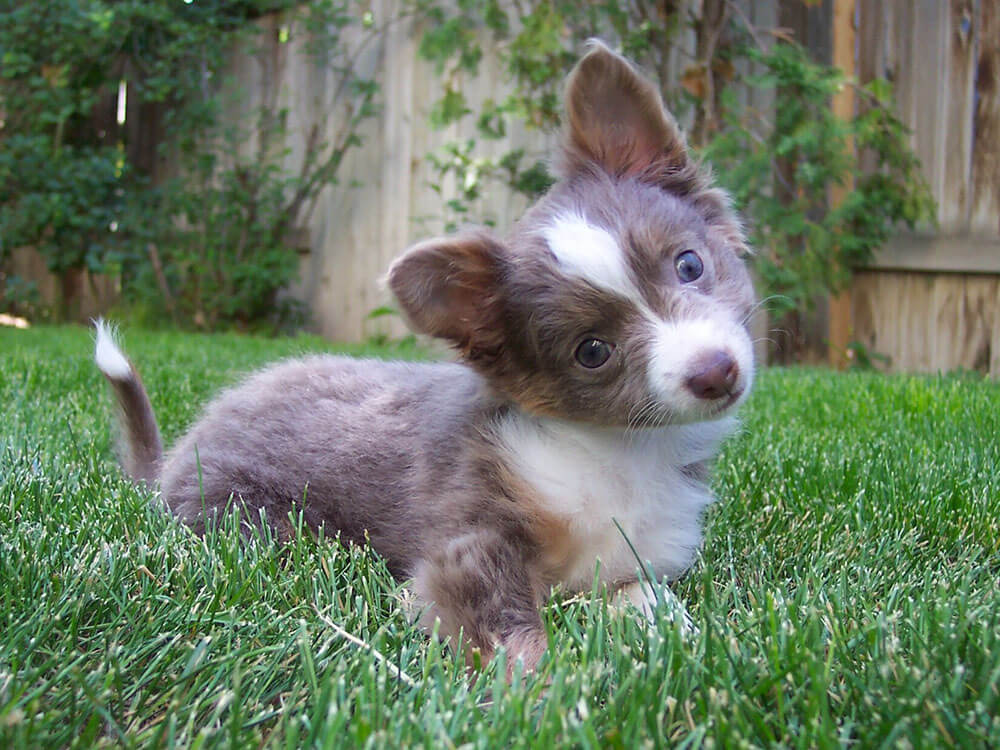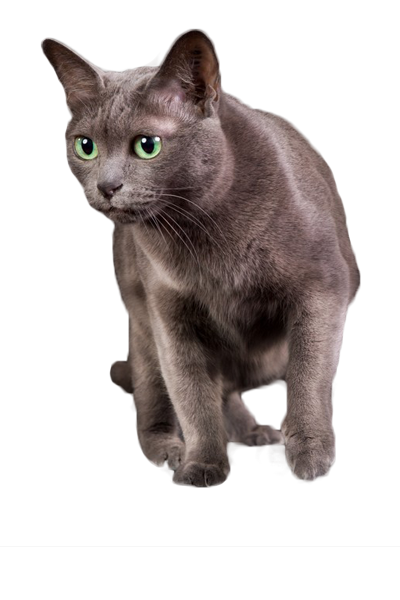Not the breed you're looking for?
Click Here
Featured Story

The Teacup Chihuahua, while distinct in its petite size, is not a separate breed from the standard Chihuahua that has been beloved by dog enthusiasts … [Read More...]
The Korat has a mystical background and was discovered in Thailand. Its native Thailand name is “Si-Sawat”. “Si” means colour and “Sawat” means prosperity or money. When translated literally, “Si-Sawat” means the colour of money. In the past, it was not sold but was a favoured gift. It was given as a present for newly-wed couples and farmers for prosperity and good luck. As such, the Korat cat is considered a valued possession.
If you believe in such a symbolic significance, this domestic feline is perfect for you as it enjoys following its owner closely, ensuring luck at your side at all times. A gorgeous purebred that brings good fortune is certainly a great addition to the family.
The Korat made it to the preserved records of the Bangkok National Library called “Tamra Maew” or The Cat-Book of Poems. It is a manuscript depicting seventeen cats, whose ownership brings good fortune, and six that are said to be omens. The Korat was listed under the good luck cats. The collection of poems is said to be traced back 600 years ago, which makes the Korat one of the ancient breeds.
The Korat was first introduced in America in 1959. Two Korats named Nara and Darra were offered by a Thai breeder to the Johnsons. The breeder received the cat as a gift when he retired from the Foreign Service in Thailand. The pair was brought by the wife, Mrs Jean Johnson, to the US. Since then, there were many Korat cats that were imported from Thailand, hence, they earned the moniker “silver-blue cat with the Thai passport”.
There were instances where the Korat was crossed with the Siamese. However, kittens having no blue coats were never registered as Korats as they do not fit the same descriptions as the original breed. Nevertheless, the Korats may produce Siamese or lilac kittens over the years because of the crossbreeding in the past.
In 1965, a breed club was founded to ensure a breeding standard for the Korats. A year later, they were awarded a Championship status in the US. The breed was then recognised by cat associations including The Cat Fanciers Association. The Korats made its first appearance in the UK in 1972, and in 1984, the breed was awarded another Championship status by the GCCF.
These strikingly silver blue cats may have gained popularity over the years, but the breed remains rare even in Thailand. After the establishment of the breed standard with a policy of no outcrossing, they became known as the “natural” blue coated cats.
The Korat cat is a medium size feline with a medium tapering tail to a rounded tip. A male Korat is muscular that can weigh from 8 to 10 pounds, whilst the female is daintier and can weigh from 6 to 8 pounds. It is heavier than it appears as it has a strong chest with well-developed muscles. When the Korat is in a sitting position, the muscular area of the chest appears to form a heart shape. The ears appear large with rounded tips.
One of its impressive features is its eyes, which has a brilliant green colour that resembles that of young plants. The green colour is said to signify a good harvest. The eyes appear large, well-rounded when fully opened and luminous. Korat kittens and adolescents may have yellow or amber to amber-green eyes. Its lips are dark blue or lavender.
The Korat is considered as a shorthair feline. Its glossy hair can be short or medium in length and fine to the touch. Another distinct feature is the cat’s coat having a silver sheen with hair lighter at the roots. The GCCF coat’s standard on Korat is any shade of blue having silver on the tips. Silver tipping is intensified at about two years old.
As with the other shorthair felines, this breed requires less grooming with weekly brushing. You only need to give grooming more attention when the Korat sheds its winter coat.
The Korat is demanding yet very affectionate to its owner. It demands attention and would expect to be included in any activity the owner is engaging in. It enjoys snuggling and any form of physical contact with people. It cannot handle being left alone. It is friendly to other cats or animals but would prefer the company of other Korats.
Because of its high intelligence, the Korat is easy to train. It can perform a trick of fetching toys and can do well with puzzle toys. As it adores human contact, it enjoys interactive games. It can be kept as an indoor pet but should be provided with its own space to play and to snuggle. If not, this feline may be destructive when left bored and alone.
The Korat has a more heightened sense of hearing, sight, and scent compared to the other cat breeds. As such, it is a sensitive cat that is not fond of loud noises.
The Korat cat should be provided with a nutritious diet that fulfils its nutritional needs. It should be consistently given the same food following the same feeding schedule. If there are changes to its diet, those must be done gradually to prevent digestive problems.
The serving portions should depend on the cat’s weight, age, and activity level. Its diet must include at least 25% protein and just 5% carbohydrates.
The Korat cat normally lives for 11 to 15 years and some may even live up to 19 years. This cat breed is generally considered healthy. Although uncommon, some Korats may develop hereditary health issues such as GM1 and GM2 gangliosidosis. Before getting a Korat, find a breeder that ensures that the feline is tested before putting her in a breeding programme.
The Korat likes to be involved in activities that the family members do, she likes following their owners around the house all day. She is a relatively active and lively cat that enjoys lots of playtimes. Owners need to spare time to play with Korats to keep them happy. To challenge her physical and mental abilities, she can be provided with various high activity toys. The Korat is good at learning tricks, as it helps to challenge and sharpen her mind.
Prepare to pay approximately £250–£500 for a healthy and well-tempered Korat. Keeping your pet in good health involves feeding her with high-quality cat food, which may cost around £20–£55.
Make your house a comfortable place for your Korat Cat by adding her basic necessities such as a cat bed, carrier, and cat toys. The total expenses for these items may run from £50–£400.
Getting your Korat Cat vaccinated decreases the chances of her catching contagious diseases. You will be looking at around £40–100 for vaccine shots.
Give your pet a parasite preventative to protect her from further risk of feline ailments. You will have to pay around £50–£60 for tick and flea treatments whilst £30–£60 for heartworm treatments.
Vet check-ups should be done on a regular basis to ensure that your Korat Cat is in tip-top shape. The fee for each session is around £30–£60.
Vet fees can be quite costly, so getting pet insurance can help ease these expenses. A time-limited coverage has a monthly cost ranging between £6–£15, whilst a lifetime coverage will set you back over £10 per month.

Are you sure the Korat is the best breed for you? Take the Pet Breed Selector Quiz to find your perfect breed match.
Cat Breed Selector QuizIs the Korat your purrfect match? Take our Cat Finder so you can find the most suitable breeds for you.
Cat Finder